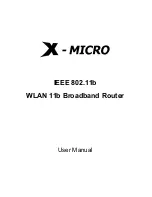
62
LonWorks Router Design Issues
EMI Design Issues
The high-speed digital signals associated with microcontroller designs can
generate unintentional Electromagnetic Interference (EMI). High-speed voltage
changes generate RF currents that can cause radiation from a product with a
length of wire or piece of metal that can serve as an antenna.
Products that use the RTR-10 router will generally need to demonstrate
compliance with EMI limits enforced by various regulatory agencies. In the USA,
the FCC requires that unintentional radiators comply with Part 15 level “A” for
industrial products, and level “B” for products that can be used in residential
environments. Similar regulations are imposed in most countries throughout the
world. For more information about such regulations, see European EMC
standards, such as VDE 0871, Class “B” 1984, and CISPR Publications 22.
Echelon has designed the RTR-10 router with low enough RF noise levels for
design into level “B” products. Echelon encourages level “B” compliance for all
L
ON
W
ORKS
compatible products.
Echelon has performed immunity tests for CE Marking on Series 5000 devices,
including the Router 5000, and has also performed additional tests to ensure
immunity and low emissions. Specifically, Echelon has performed the following
immunity tests:
•
Electrostatic discharge (ESD) testing (both air and contact discharge) for
compliance with Comité Européen de Normalisation2 (CEN), standard
EN 61000-4-2
•
Radiated radio frequency (RF) immunity testing for compliance with
CEN standard EN 61000-4-3
•
Burst testing for compliance with CEN standard EN 61000-4-4
•
Surge testing for compliance with CEN standard EN 61000-4-5
•
Conducted RF Immunity testing for compliance with CEN standard EN
61000-4-6
You need to perform your own immunity testing for Router 5000 devices that you
design and build. See the
Series 5000 Chip Data Book
for additional information
about electromagnetic compatibility (EMC) design guidelines for a Series 5000
Chip, including the Router 5000.
Designing Systems for EMC (Electromagnetic
Compatibility)
The RTR-10 router has been designed so that products using it should be able to
meet both FCC and VDE level “B” limits. Careful system design is important to
guarantee that an RTR-10 router-based product will achieve the desired EMC.
EMC Design Tips
The following general design tips can help ensure successful EMC for your RTR-
10 or Router 5000 devices:
2
European Committee for Standardization
Summary of Contents for 14315R
Page 1: ...LONWORKS Router User s Guide 078 0018 01E...
Page 6: ......
Page 9: ...Appendix A Communications Parameters for LonWorks Routers 81 Communications Parameters 82...
Page 10: ......
Page 48: ......
Page 53: ...LonWorks Router User s Guide 43 Figure 22 Router 5000 Mechanical Specifications...
Page 54: ......
Page 57: ...LonWorks Router User s Guide 47 Figure 23 RTR 10 Motherboard Example Schematic...
Page 61: ...LonWorks Router User s Guide 51 Figure 26 Router 5000 Motherboard Example Schematic Core...
Page 62: ...52 Developing a LonWorks Router Figure 27 Router 5000 Motherboard Example Schematic Network...
Page 68: ......
Page 80: ......
Page 99: ...www echelon com...
















































